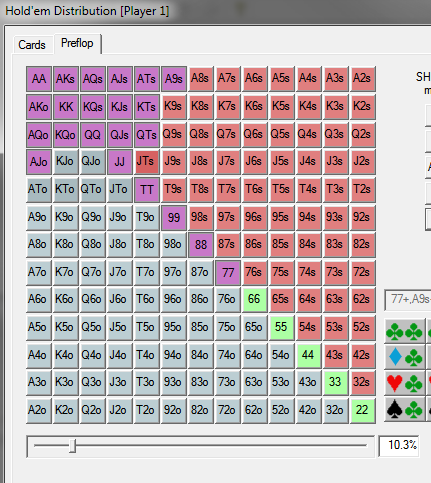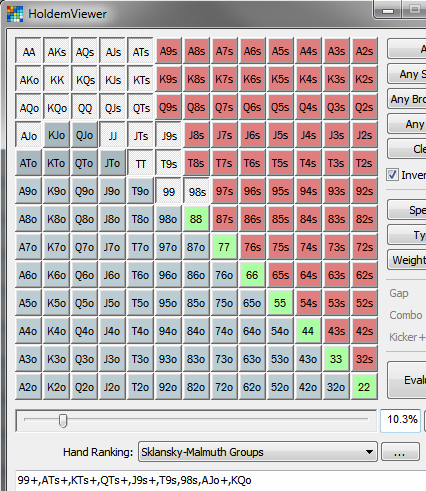|
|
Well start now: let's take a range of 77-QQ,ATs+,KTs+,QTs+,JTs+,AJo+,KJo+ for your opponent. The board is 8sTd7s and your cards are JsTs. If you bet, you figure he will continue with 77-QQ,ATs,AsQs,AsKs,KTs,KsJs,KsQs,QTs,JTs.
You want to know what % of his initial range he continues with (to calculate whether your semi-bluff would be successful).
Do do this, you have to manually count the combos in his initial range, then the combos in his continuing range. For example, since the 7s is on the board, he could be holding 3 possible combos of 77 (7h7d,7h7c and 7d7c). As you will soon realize, the process is a bit long and tedious and error prone for big ranges, so Slice can help you do these calcs quickly and efficiently (however it is worth to do it manually to get used to count combos in your head). One must read thread about counting combos, blockers, etc is here:
http://www.flopturnriver.com/pokerfo...tc-161721.html
Read away, and do the exercise!
edit: I would start by doing the simpler exercise in point 5 of the thread linked to above.
|




 Reply With Quote
Reply With Quote








